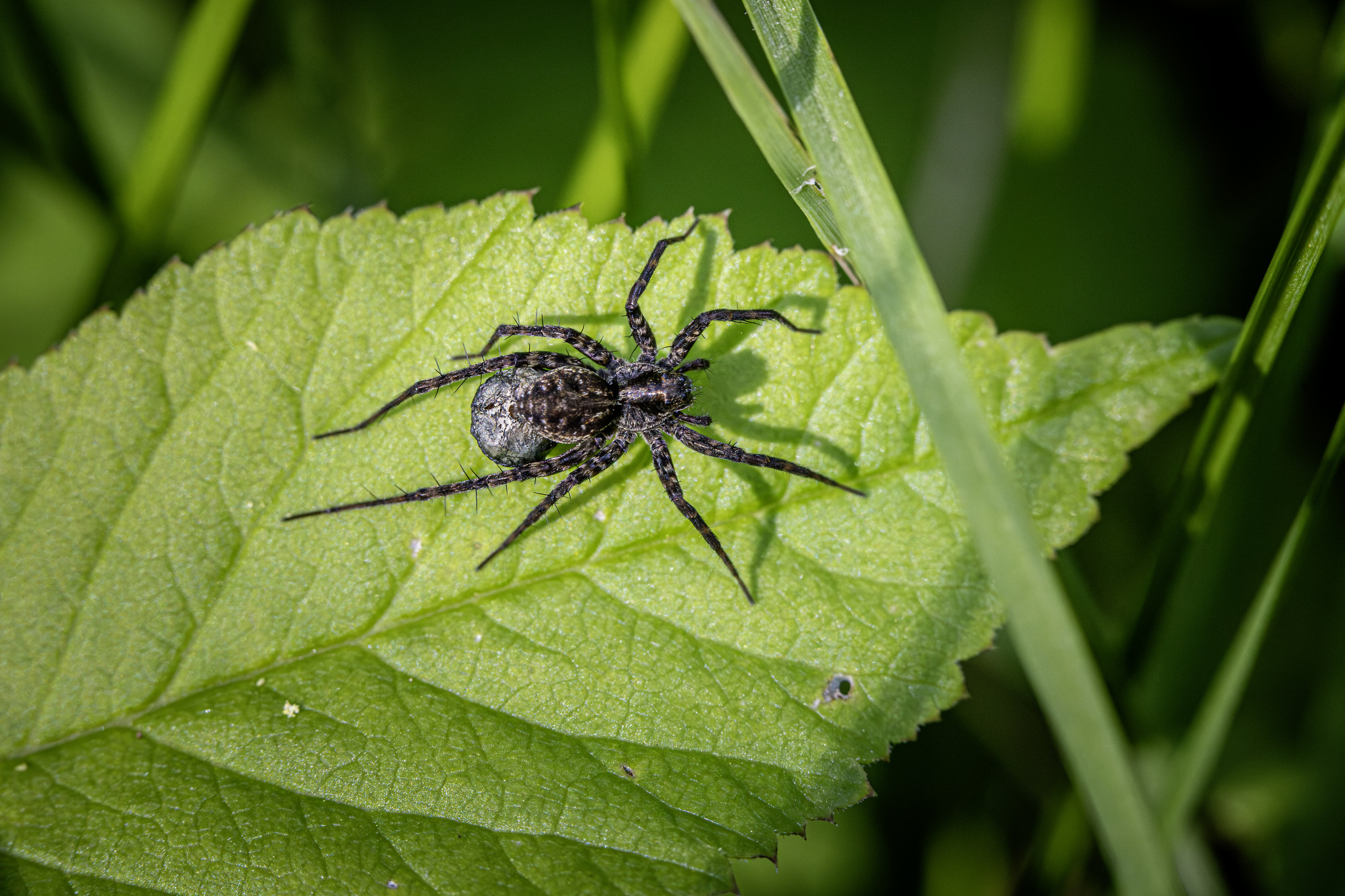The Wolf Spider (Acantholycosa lignaria) is a member of the Lycosidae family, known for its robust build and active hunting behavior. Here are some key features and characteristics of this spider:
- Appearance:
- Size: Wolf spiders vary in size, with body lengths ranging from 8 to 15 millimeters (0.3 to 0.6 inches), with females generally being larger than males.
- Color: Acantholycosa lignaria typically has a brown or gray body with darker markings, which provide excellent camouflage against the forest floor and leaf litter where it often resides.
- Eyes: Like other wolf spiders, it has eight eyes arranged in three rows: four small eyes on the bottom row, two large eyes in the middle, and two medium-sized eyes on the top row. This arrangement gives them excellent vision for detecting prey and predators.
- Habitat:
- This species is primarily found in forested areas, particularly in leaf litter, under stones, and in crevices of logs. They can also be found in grasslands and sometimes in human dwellings near forested regions.
- Acantholycosa lignaria is well-adapted to temperate climates and is most commonly found in regions with a significant presence of decaying wood and leaf litter.
- Distribution:
- The Acantholycosa lignaria is primarily distributed across Europe and Asia, particularly in northern and central regions where suitable forest habitats are prevalent.
- Diet and Hunting Behavior:
- Wolf spiders are active hunters, meaning they do not spin webs to catch their prey. Instead, they rely on their speed and agility to chase down and capture insects and other small invertebrates.
- They use their excellent vision to spot prey and pounce on it, injecting venom to subdue it quickly.
- Reproduction:
- Wolf spiders have a unique courtship ritual where the male performs a series of movements and vibrations to attract a female.
- After mating, the female lays eggs and constructs a silk sac to protect them. She carries this sac attached to her spinnerets until the eggs hatch.
- Upon hatching, the spiderlings climb onto the mother’s back and remain there for a few weeks until they are ready to disperse and fend for themselves.
- Behavior:
- Wolf spiders are primarily nocturnal, hunting and being most active at night.
- They are solitary creatures, except during the mating season and while the female is caring for her young.
- Adaptations:
- Their coloration provides camouflage, allowing them to blend in with their surroundings and avoid predators.
- They have strong, spiny legs that aid in running and pouncing on prey.
- Conservation Status:
- Acantholycosa lignaria is not considered endangered or threatened. It is a common species within its range and is well-adapted to a variety of forested environments.
- However, habitat destruction and pollution could impact local populations, as with many other species reliant on forest ecosystems.
The Wolf Spider (Acantholycosa lignaria) is an efficient predator with fascinating behaviors and adaptations. Its role in controlling insect populations makes it an important component of its natural habitat.
Visited 794 times, 6 visit(s) today
Views: 1025
Subscribe to the newsletter:
